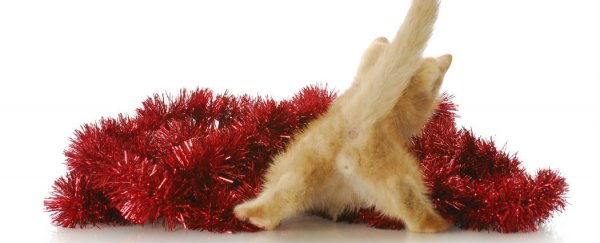Scientists in Norway have completed the first comprehensive review of research into the function and origin of the anus, because - believe it or not - as far as organs go, it's a relatively understudied one.
And what they found is that as different species evolved and separated from each other over millions of years, some becoming gradually more complex, others remaining fairly simple, everybody's anuses followed suit. They range from complex to simple, with something multifunctional in between, depending on the genes each species expresses.
As scientists get better at figuring out how our genes affect the development of our organs, they're increasingly trying to figure out their origins. Specifically, what was the exact combination of factors that had to come together for our brains, our lungs, or our anuses to end up like they did?
"That revived the interest in the origin of our organ systems. Where did brains come from? How did blood evolve?" one of the team, molecular biologist Andreas Hejnol, told Matt Walker at the BBC. "But while several organ systems have been investigated, such as the nervous system, the anal opening has been largely neglected. It is a fascinating subject to investigate how changes on the molecular level during evolution led to the shaping of this part of the gut."
And it all starts with the gut, Hejnol and his colleague José M. Martín-Durán write in the journal Zoologischer Anzeiger. Because there's no point having a disposal unit if you've got nothing to dispose of. Complex creatures such as ourselves have evolved a sack-like gut that sits between two different openings in our digestive system, which means we can eat something, and then eat something else while a different part of us is digesting our first meal.
But despite this clear advantage, simple creatures like sea cucumbers, corals, and tapeworms have gone their own way, and evolved a tube-shaped canal instead, which acts as an opening for food to be taken in digested, and sent right back out again. See? Multifunctional.
And then there are those species that scientists suspect only have anuses when they need them. The team calls these 'transient anuses', and says while no one's actually seen a creature defecate using a transient anus, research into two types of simple worms has revealed a tiny opening in the gut that seems to appear and disappear over and over.
A certain species of scorpion even goes so far as to dispose of theirs entirely - when they break their tails off to avoid predation, like a skink loses its tail, they will tear off their own anuses in the process, says Walker at the BBC. "Since the tail never grows back, and the wound scars over, the scorpion (Ananteris balzani) can never defecate again, their abdomens swelling with the build up of poo." The price you have to pay to simply stay alive.
Some species that evolved to have anuses went on to lose them again over the course of millions of years, says Walker, which doesn't make a whole lot of sense, given the clear advantages they offer.
This complex array of haves, have-nots, and used-tos is why researchers have struggled to answer the question of how our version of it actually evolved. The team managed to identify two genes in particular that are responsible for the development of the anus in almost every animal species on Earth - the brachyury and caudal/Cdx genes - and they now know that if you express those genes in the tissues surrounding the area, you're going to develop an anus, and if you don't, you won't. Those that possibly have transient anuses might just be turning the expression of these genes on and off as needed.
While the researchers say the deep origin of the anus remains unclear, they suspect it evolved independently across many different groups of species, which explains why there are so many different versions of the organ. An hypothesis they're currently investigating is that the evolution of the anus could be linked to a male reproductive organ known as the gonopore, which is found in a group of very primitive, worm-like animals called Acoela. The key piece of evidence here is that caudal/cdx and brachyury genes are expressed in the gonopore area.
Matt Walker explains for the BBC:
"[Acoela] have no gut at all, nor anus and even lack circulatory or respiratory systems. In essence they do not have any body cavities; their bodies are solid.
But they do create sperm, which is released through an opening in the body called a gonopore. Many animals that lack back-bones use gonopores to release sperm and eggs, and genetic and molecular studies by Hejnol and Martín-Durán and colleagues suggest the development of the gonopore might be linked to the origin of another opening - the anus."
One possible scenario the researchers discuss is that the male reproductive organ system was the first to connect with the gut in higher-orderer creatures at the early stages of their evolution, and this formed a cloaca - a variation on the anus seen in many birds and reptiles today. "This would thus provide an alternative hypothesis, which would connect first the male reproductive system with the gut, and later with the female reproductive system," they conclude.
Which of course makes everything a little controversial, when you start talking about different sexes evolving things at different rates, Hejnol concedes.
Anuses, you strange, strange enigmas.
Source: BBC Earth
